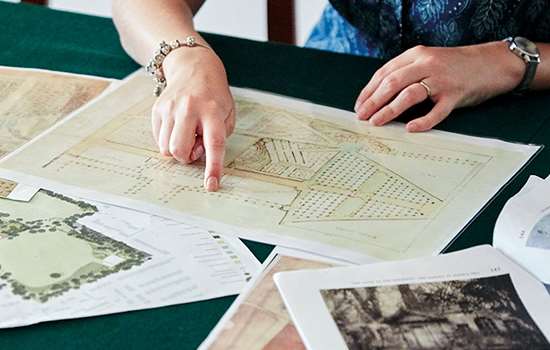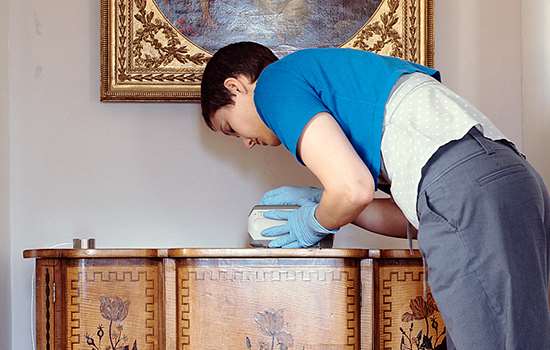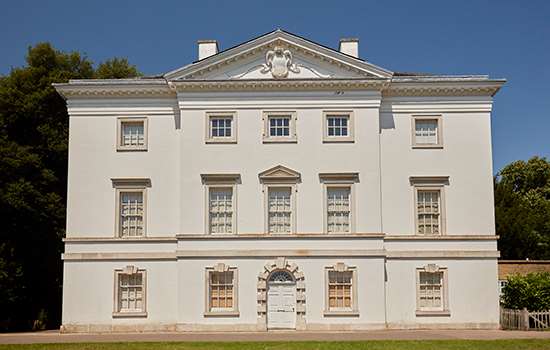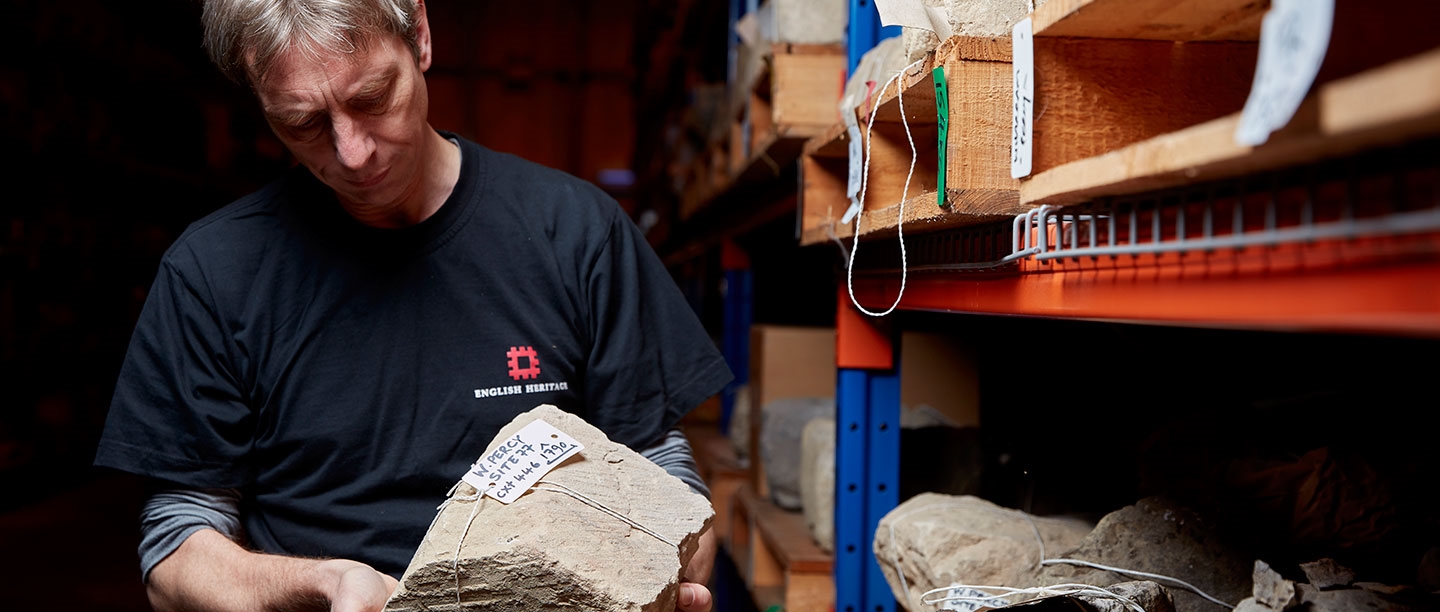
Our Researchers
Research at English Heritage is carried out by staff with many different specialisms, including historians, curators, landscape advisors and conservation scientists.
Many of our researchers are world experts in their fields, conducting historical and scientific research, advising on interpretation and learning programmes, authoring guidebooks, co-supervising PhD candidates and ensuring that our sites and collections are properly cared for.
Our Sites
-
Properties Historians
Dr Steven Brindle FSA
Senior Properties HistorianSteven has broad research interests in various aspects of British architectural history from the Middle Ages to the 19th century. He has published extensively on the life and work of Isambard Kingdom Brunel, medieval castles and other sites, and written or co-authored five EH guidebooks. He was the editor and lead author of the first comprehensive history of Windsor Castle, published recently. He is currently writing a general history for a broad readership, Architecture in Britain and Ireland, 1530–1830, commissioned by the Paul Mellon Centre and Yale University Press as a successor to Sir John Summerson’s well-known volume in the Pelican History of Art series (1953). This is due to be published in 2021.
Selected publications:
- Brindle, S (editor and lead author), Windsor Castle: A Thousand Years of a Royal Palace (London, 2018)
- Brindle, S, Orford Castle (English Heritage guidebook, London, 2018)
- Brindle, S, ‘Kent in Italy’, ‘Kent the painter’, and ‘Kent’s royal commissions’, in William Kent: Designing Georgian Britain, ed Susan Weber (London, 2013).
Dr Michael Carter FSA, FRHistS
Senior Properties HistorianMichael Carter is a historian and art historian who specialises in monasticism, especially in the late Middle Ages. His primary areas of interest are monastic art and architecture, relics and their veneration, and monastic books and libraries. Michael has lectured and published widely and since joining English Heritage in 2015 has worked on major projects at Battle, Hailes, Rievaulx and Whitby abbeys.
Selected publications:
- Carter, M, The Art and Architecture of the Cistercians in Northern England, c.1300–1540 (Turnhout, 2019)
- Carter, M, ‘The relics of Battle Abbey’, Journal of Medieval Monastic Studies, 8 (2019), 308–45
- Carter, M, ‘Art, architecture, piety and patronage at Rievaulx Abbey, c.1300–1538’, in Monastic Life in the British Isles: Essays in Honour of Janet Burton, ed Karen Stöber, Julie Kerr and Emilia Jamroziak (Cardiff, 2018), 89–104.
Dr Andrew Hann
Historians’ Team LeaderAndrew Hann is an economic and social historian specialising in the early modern and modern periods, with a particular interest in consumption and material culture, and diverse histories. He has worked primarily on English Heritage’s portfolio of country houses and historic designed landscapes, including Audley End, Osborne House and Wrest Park. He is also the English Heritage lead on external academic engagement and our collaborative doctoral programme.
Andrew is a co-author of the English Heritage Research Strategy and Agenda.
Selected publications:
- Hann, A, ‘A tale of two advisors: Jemima, Marchioness Grey, and the improvement of the gardens at Wrest Park in the mid-18th century’, Women’s History: The Journal of the Women’s History Network, 2:13 (2019), 5–14
- Dresser, M, and Hann, A (eds), Slavery and the British Country House (English Heritage, London, 2013)
- Garland, S, and Hann, A, Wrest Park (English Heritage guidebook, London, 2011; revised edn 2013).
Dr Nick Holder FSA
Senior Properties Historian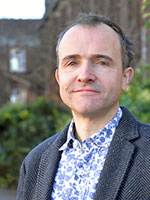
Nick Holder is a historian and archaeologist at English Heritage, where his work includes the 2019 guidebook to Tintagel Castle as well as research on the medieval crosses at Geddington and Ludgershall, the small town of Dunster, and Thetford’s Church of the Holy Sepulchre. His research interests include urban landscape, medieval religion, the Dissolution of the Monasteries, architectural history and digital mapping. He has also written extensively about medieval and early modern London.
Selected publications:
- Batey, C, and Holder, N, Tintagel Castle (English Heritage guidebook, London, 2019)
- Hardward, C, Holder, N, Phillpotts, C, and Thomas, C, The Medieval Priory and Hospital of St Mary Spital, MOLA Monograph 59 (London, 2019)
- Holder, N, The Friaries of Medieval London: From Foundation to Dissolution (Boydell, 2017).
Dr Megan Leyland
Senior Properties Historian
Dr Megan Leyland is a historian specialising in the country house and gender history. In particular, her research has focused on the role of women in shaping the architecture of their homes in the 18th and 19th centuries. Megan also has a strong interest in community engagement and telling more diverse and inclusive histories at our sites. Megan has worked on a range of properties at English Heritage, including Richmond Castle, Marble Hill, Bolsover Castle and Kirby Hall.
Paul Pattison FSA
Senior Properties HistorianPaul Pattison is a historian specialising principally in warfare, military history, soldiers, fortifications and weapons of all eras but focused especially on the period 1500–1945 in Britain and continental Europe. The history and archaeology of Roman Britain is another of Paul’s key interests. He is also an experienced landscape archaeologist with a wide knowledge of field monuments of all eras, with a particular interest in historic parks, gardens and designed landscapes from the Middle Ages to the present day.
Selected publications:
- Pattison, P, 'The First World War anti-aircraft batteries at Lodge Hill and Beacon Hill, Kent', in Fort: The International Journal of Fortification and Military Architecture, 47 (Hampshire, 2019), 118–44
- Pattison P, Brindle, S, and Robinson, DM (eds), The Great Tower of Dover Castle: History, Architecture and Context (Liverpool, 2020)
- Pattison, P, and Thomas, RJC, ‘Defending the coast’, in Legacies of the First World War, ed W Cocroft and P Stamper (Swindon, 2018), 66–92
- Pattison, P, Deal Castle (English Heritage guidebook, London, 2017)
- Pattison, P, ‘Admiralty Lookout and the defence of Dover harbour’, English Heritage Historical Review, 5 (2010), 156–71.
Dr Rebecca Preston
Historian, Blue PlaquesRebecca undertakes blue plaques research, including the assessment of individuals suggested for commemoration and the buildings and places with which they were associated. Her wider interests are in the design and use of landscape and the built environment, including house and garden in 19th- and 20th-century Britain. Rebecca previously held ESRC- and AHRC-funded research posts at Royal Holloway, University of London, and the Open University, on a series of projects which investigated life in residential institutions including lodging houses and prisons and the role of pets in family life in the 19th and 20th centuries.
Selected publications:
- Preston, R, and Hickman, C, ‘Cultivation in captivity: gender, class and reform in the promotion and practice of women’s prison gardening in England, 1900–1939’, Women’s History: The Journal of the Women’s History Network, 2:13 (2019), 27–32
- Fisher, F, and Preston, R, ‘Light, airy and open: the design and use of the suburban public-house garden in England between the wars’, Studies in the History of Gardens and Designed Landscapes, 39:1 (2019), 5–21
- Hoskins, L, and Preston, R, ‘Behind the scenes: the development of London’s interwar suburban shopping parades’, Architecture and Culture, 6:1 (2018), 99–121.
Dr Andrew J Roberts
Properties Historian
Andrew Roberts is a historian who specialises in the reception and interpretation of the ancient world, particularly Roman Britain. His projects at English Heritage include the design, development and authorship of five major Roman archaeological sites and museums (Chesters, Birdoswald, Wroxeter, Corbridge and Richborough). In addition, he has worked on many smaller projects including Tudor lodges, industrial heritage in the north east, and 19th-century country houses. He is actively researching the use of immersive interpretation of Roman material culture and family-focused approaches to the curation of archaeology. He is currently supervising a PhD producing and evaluating personalised storytelling approaches to Hadrian’s Wall.
Selected Publications:
- Roberts, A, and Petrelli, D, ’Experiencing Roman Religion on Hadrian’s Wall: Embodied Interaction in an Antiquarian Museum’, Theoretical Roman Archaeology Journal, 6:1 (January 29, 2024)
- Petrelli, D, and Roberts, A, ’Exploring Digital Means to Engage Visitors with Roman Culture: Virtual Reality vs. Tangible Interaction’, Journal on Computing and Cultural Heritage (September 29, 2023)
- Roberts, A, ’An Exhibition of Their Own: Designing a Family-Friendly Experience at Birdoswald Roman Fort’, in International Series: Visitor Experiences and Audiences for the Roman Frontiers, BAR International Series, S3066:41–54 (2021)
Howard Spencer
Senior Historian, Blue Plaques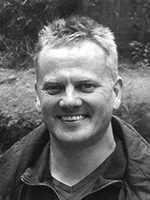
Howard Spencer undertakes and supervises blue plaque research, including the assessment of figures suggested for commemoration on their associated buildings. He has a general interest in the practice and practicalities of promoting the public appreciation of built heritage by the use of heritage markers, and in improving the standard of such markers. Howard previously worked as a Research Editor on the Oxford Dictionary of National Biography and was a Research Fellow at the History of Parliament.
Selected publications:
- Spencer, H (ed), The English Heritage Guide to London’s Blue Plaques (London, 2016; revised edn 2019)
- Eavis, A, and Spencer, H, ‘Risk and reputation: the London blue plaques scheme’, in Dethroning Historical Reputations: Universities, Museums and the Commemoration of Benefactors, ed J Pellew and L Goldman (London, 2018)
- Spencer, H, 15 chapters in Lived in London: Blue Plaques and the stories behind them, ed E Cole (London, 2009).
Dr William Wyeth FSA Scot
Properties HistorianWill researches castles and castle landscapes and has worked at English Heritage since 2017. Since joining he has contributed to projects at Stokesay and Richmond castles, where he researched and wrote new panel text and digital content, and led members’ tours. In 2018 he completed his PhD, jointly supervised by the University of Stirling and Historic Environment Scotland, on early stone Scottish castles. His research interests include timber castles, the 11th century and theoretical approaches to understanding medieval buildings and societies.
Selected publications:
- Wyeth, W, ‘Medieval timber motte towers’, Medieval Archaeology, 62:1 (2018), 34–55
- Wyeth, W, ‘Norse castles in Scotland’, Château Gaillard, 28 (2018), 311–18.
-
Properties Curators
Dr Jeremy Ashbee FSA
Head Properties Curator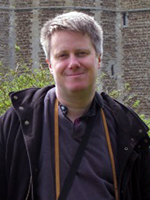
Jeremy Ashbee specialises in the history and architecture of medieval palaces and castles. He has considerable experience in the transcription and translation of contemporary documents (Latin, Anglo-Norman, Middle English) and in the recording and analysis of standing buildings.
Selected publications:
- Ashbee, J, ‘The king’s accommodation at his castles’, in The Impact of the Edwardian Castles, ed JR Kenyon and D Williams (Oxford, 2009)
- Ashbee, J, ‘The function of the White Tower under the Normans’ and ‘The structure and function of the White Tower, 1150–1485’, in The White Tower, ed E Impey (New Haven and London, 2008), 124–39 and 140–59
- Official English Heritage and Cadw guidebooks to Goodrich Castle, Dunstanburgh Castle (with Alastair Oswald), Conwy Castle and Town Walls, Rochester Castle, Jewel Tower, Westminster, Beaumaris Castle, Harlech Castle, Restormel Castle.
Win Scutt
Properties Curator (West)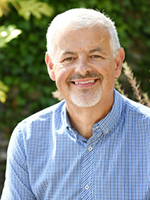
Win Scutt is an archaeologist whose research focuses on the later prehistory of Britain. He is particularly interested in how the study of place names can throw light on the language varieties spoken in all parts of Britain in all periods from the Stone Age until the Roman period.
Selected publications:
- Scutt, W, ‘Celtic in the Fleuve Manche’, Philology, 3:1 (2017), 135–48
- Hyland, M, and Scutt, W, ‘The evolution of psychosomatic phenomena’, in Health in Past Societies: Biocultural Interpretations of Human Skeletal Remains in Archaeological Contexts, ed H Bush and M Zvelebil, BAR International Series 567 (Oxford, 1991).
Dr Heather Sebire FSA, MCiFA
Senior Property Curator, Stonehenge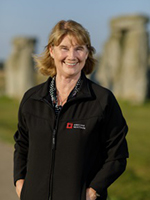
Heather Sebire is Senior Historic Property Curator, Stonehenge, at English Heritage, working with Stonehenge and the other guardianship sites in the Stonehenge, Avebury and Associated Sites World Heritage Site.
Heather is also currently Honorary Secretary of the Society of Antiquaries of London, of which she is a fellow, and a former council member of the Prehistoric Society and the Royal Archaeological Institute. She is also a member of the scientific committee of the ‘Paysages des mégalithes’ project to inscribe the many sites at Carnac in Brittany, France, as a World Heritage Site. Current personal research interests include the legibility and life history of monuments, particularly addressing how monuments are presented to the public. Other research interests include the Neolithic period, focusing on megaliths along the Atlantic façade, and island archaeology.
Selected publications:
- Sebire, H, ‘Stonehenge 100: Managing a global prehistoric icon in the 21st century’, conference paper from the International Symposium for the Conservation, Research and Sustainable Development of Pre-Historic Heritage, Zhoukoudian, China (2019)
- Sebire, H, ‘Reaching out: the participatory culture model and current approaches to the creation of new archaeological knowledge with local communities’, in Transforming Heritage Practice in the 21st Century, ed J Jameson (Heidelberg, 2018)
- Sebire, H, ‘Les pierres de mémoire: the life history of two statue-menhirs from Guernsey, Channel Islands’, in The Lives of Prehistoric Monuments in Iron Age, Roman and Medieval Europe, ed M Díaz-Guardamino, LG Sanjuán and D Wheatley (Oxford, 2015).
-
Gardens and Landscape
Elinor Davies
Historic and Botanic Garden Training Manager
Elinor is a horticulturalist with a background in landscape architecture and a landscape manager. She leads on gardens training, managing the Historic and Botanic Garden Training Programme (HBGTP), which has established itself as a leading provider of practical horticulture placements in the UK. As part of her role Elinor also oversees the introduction of horticulture apprenticeships and assists in the delivery of compliance and skills training for gardens staff.
Emily Parker
Landscape AdvisorEmily Parker is a historian who specialises in garden history and designed landscape conservation. Emily’s primary research interests are garden design in the 18th century, including the role of Alexander Pope, ‘Capability’ Brown and Humphry Repton. She is also interested in the social history of gardens and how people enjoyed and worked in them throughout history. Emily has also researched and written interpretation content for many English Heritage sites including Eltham Palace, Kirby Hall, Marble Hill House and Mount Grace Priory. She has also produced Conservation Management Plans for our gardens including Belsay Hall, Marble Hill and Walmer Castle.
Selected publications:
- Parker, E, ‘The taste of the Ancients’: the garden at Marble Hill’, Garden History, 46:2 (2018), 128–53
- Parker, E, ‘“In answer to several questions proposed for my consideration”: Repton’s recommendations for the estate at Kenwood’, in Repton in London (London, 2018), 9–20.
Dr Michael Klemperer
Senior Gardens Advisor, North and MidlandsDr Klemperer is a horticulturalist, archaeologist and landscape historian. His study and practice have involved the restoration and care of a number of historic garden landscapes from the 14th to the 19th centuries. His research involves the study of both historic landscapes and gardens and the historic planting material contained therein. He has worked on the landscape restoration of Cusworth Hall, Wentworth Castle, Brodsworth Hall, Stokesay Castle, Kenilworth Castle, Mount Grace Priory (monk’s cell) and many others.
Selected publications:
- Klemperer, M, ‘Managing the national collections at Wentworth Castle Trust’, in Rhododendrons, Camellias and Magnolias: Yearbook of the Rhododendron, Camellia and Magnolia Group of the RHS (2013)
- Klemperer, M, Style and Social Competition in the Large Scale Ornamental Landscapes of the Doncaster District of South Yorkshire, c.1680–1840, BAR British Series 511 (Oxford, 2010).
John Watkins CIHort, FCIHort
Head of Gardens and Landscape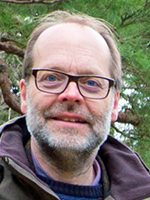
John leads English Heritage’s Gardens and Landscape Team, who work with historians, landscape architects, arboriculturists, botanists and ecologists to ensure that the settings of our properties and our gardens tell their landscape story. Over the last 22 years at English Heritage, he has worked on the a number of major garden and landscape projects, including Chiswick Park, Down House, Eltham Palace, Wrest Park, Bolsover Castle, Witley Court and Kenilworth Castle. In 1999 he led the Contemporary Heritage Gardens project, incorporating the work of six contemporary designers at English Heritage sites.
Working with partners across the horticultural sector, he established the Historic and Botanic Gardens Training Programme, which has been running for over 12 years. It has placed over 270 trainees in historic and botanic gardens across the UK to receive practical horticultural training.
Selected publications:
- Watkins, J, The Glasshouse Garden (London, 1993)
- Coxen, A, Furmanic, B, Hornemann, N, Morysinski, T, Piotrowska-Mosek, K, van Tilberg, B, and Watkins, J, My Place: Historic European Parks and their Communities (Polish National Centre for Historical Monument Studies and Documentation, 2006)
- Wright, T, and Watkins, J (eds), The Management and Maintenance of Historic Parks, Gardens and Landscapes, The English Heritage Handbook (London, 2007)
- Keay, A, and Watkins, J, The Elizabethan Garden at Kenilworth Castle (English Heritage, Swindon, 2013).
Christopher Weddell
Senior Gardens Advisor, SouthChristopher Weddell is a horticulturist who specialises in the management and maintenance of historic gardens and landscapes. He leads on the recording and curation of plant records to support the understanding of English Heritage’s garden sites.
Selected publications:
- Weddell, C, Eltham Palace and Gardens Landscape Management Plan (2013)
- Weddell, C, Garden Conservation Management Plan Government House, Bermuda (2014)
- Parker, E, Weddell, C, Walmer Castle and Gardens Landscape Management Plan (2017).
Our Collections
-
Collections Curators
Dr Kathryn Ann Bedford
Curator of Collections and Interiors (South East)Kathryn’s background is in medieval history and the inter-relationship between history and fiction. Her current research focuses on reanalysis of site collections. Her work extends from Roman archaeology to the Cold War, currently focusing on the collection from Richborough Roman Fort. She has a particular interest in historic glass.
Selected publications:
- Bedford, K, and Seliger, L, ‘Recreating painted glass at Battle Abbey’, Vidimus, 112 (July/Aug 2017) (accessed 21 Feb 2020)
- Bedford, K, ‘Fouke Fitz Waryn: outlaw or chivalric hero?’, in British Outlaws of Literature and History, ed Alexander L Kaufman (London, 2011).
Kevin Booth
Senior Collections Curator (North)Kevin is an archaeologist and curator working across assemblages from the Neolithic to the Cold War. His current work is focused on exploring methodologies for reappraising legacy archaeological archives within the EH collections; developing a research framework for a major human remains assemblage; and establishing an oral history research project around the Royal Observer Corps.
Selected publications:
- Booth, K, and Bowers, R, ‘Preserving and managing York Cold War Bunker: authenticity, curation and the visitor experience’, in In the Ruins of the Cold War Bunker, ed L Bennett (Lanham, MD, 2016).
Douglas Carr
PhD studentDouglas is an AHRC-funded Collaborative Doctoral Partnership student working on a PhD examining ‘Roman Coins from Hadrian’s Wall and the Northern Frontier Zone’ at Newcastle University in collaboration with English Heritage. Douglas is researching the supply, usage (also non-usage) and loss of coins at the northern frontier of Roman Britain while compiling a dataset of about 55,000 Roman coins from northern England and southern Scotland. Besides Roman coins and frontiers, his research interests include the late Roman to early medieval transition, Roman warlordism, violence in the Roman world and Roman small finds.
Selected publications:
- Carr, D, ‘Roman warlords and the early medieval world’, in Current Approaches to People, Places and Things in the Early Medieval Period: Proceedings of the 12th Annual Early Medieval Archaeology Student Symposium, ed H Christie and M Kasten, BAR International Series 2951 (Oxford, 2019).
Dr Olivia Fryman
Curator of Collections and Interiors (South London)Olivia specialises in the study of late 17th- and early 18th-century material culture. Her primary research interests are furniture and interior decoration at the English court, and the work of domestic servants. Olivia has also published on the 20th-century history of Kensington Palace and its restoration following the Second World War.
Selected publications:
- Fryman, O (ed), Kensington Palace: Art, Architecture and Society (London and New Haven, 2018)
- Fryman, O, ‘Ritual and ceremony’ and ‘Furnishing the court’, in Charles II: Art & Power, ed R Bird and M Clayton (London, 2017)
- Fryman, O, ‘Coffer-makers to the late Stuart court, 1660–1714’, Furniture History, 52 (2016), 1–15.
Susan Harrison
Collections Curator (North, East and West Yorkshire and Cumbria)Susan Harrison has wide research interests in collections held by English Heritage across a date range from Roman to post-medieval periods. Her primary interests are in medieval monastic collections and Anglo-Saxon sculpture. She also contributes to the English Heritage Members’ Magazine and guidebooks.
Selected publications:
- Harrison, S, ‘Dissolution: the Dissolution of the Monasteries’, in Art under Attack: Histories of British Iconoclasm, ed T Barber and S Boldrick (London, 2013)
- Dungworth, D, and Harrison, S, Belsay Castle, Belsay, Northumberland: Scientific Analysis and Historic Interpretation of Decorated Window Glass by Henry Gyles of York, Research Department Report Series 97-2011 (English Heritage, London, 2011)
- Harrison, S, ‘A study of a tenancy agreement between John, Abbot of Byland Abbey, and William Storer, 2 April 1534, for Old Byland, and a review of the evidence identifying the location of Old Byland Grange’, The Ryedale Historian, 29 (forthcoming in 2020).
Dr Ian Leins AMA, FSA
Curator of Collections and Interiors (South West)Ian Leins is an archaeologist, historian and the curator of collections for the south west. His research background is mainly in Iron Age and Roman numismatics and archaeology. He previously worked at the British Museum where he co-curated the exhibition ‘Celts: Art and Identity’. Since joining English Heritage in 2015, Ian has been researching monastic collections from Hailes Abbey and Muchelney Abbey, and working on the 20th-century artillery collection.
Selected publications:
- Leins, I, and Farley, J, ‘A changing world, c.150 BC–AD 50’, in Celts: Art and Identity, ed J Farley and F Hunter (London, 2015), 108–27
- Leins, I, ‘Anarevito: political fluidity in southern Britain in the late Iron Age’, in Studies in Ancient Coinage in Honour of Andrew Burnett, ed R Bland and D Calomino (London, 2015), 109–18.
Dr Frances McIntosh
Curator of Collections and Interiors (Hadrian’s Wall and the North East)Frances was a Roman small finds expert initially, but her work both with the Portable Antiquities Scheme, and now with English Heritage, means she deals with material culture from all periods. Her PhD into the Clayton Collection (displayed at Chesters Roman Fort), led her to develop an interest in antiquarianism and the discovery of Hadrian’s Wall. Currently she is working on archive material from Chesters and considering the evidence for gaming at Roman Corbridge.
Selected publications:
- Birley, B, Croom, A, Laskey, J, McIntosh, F, Padley, T, Parkin, A and Price, E, Living on the Edge of Empire The Objects and People of Hadrian's Wall’ ed R Collins (Barnsley, 2020)
- McIntosh, F, 'The Clayton Collection. An archaeological appraisal of a 19th century collection of Roman artefacts from Hadrian’s Wall’, Archaeology of Roman Britain, 1 (2019)
- Guest, P, McIntosh, F, and Ponting, M, ‘The Walbottle Hoard of 1879 – the story as of 2017’, Archaeologia Aeliana, 5th Series, Vol. 46 (2017)
Cameron Moffett
Collections Curator (West)Cameron is a curator of archaeological collections. Her research into the collections from Tintagel Castle, Cornwall, identified evidence for mead production there in the immediate post-Roman period. Following on from that, she has been able to trace evidence for mead production back to Roman sites such as Wroxeter and sites on Hadrian’s Wall. Recently she has undertaken an assessment of the evidence for magic at Roman Wroxeter. Cameron’s research interests are honey in antiquity and late Roman jet.
Selected publications:
- Moffett, C, ‘Slate discs at Tintagel Castle: evidence for post-Roman mead production?’, The Antiquaries Journal, 97 (2017), 119–43
- Moffett, C, ‘The stone discs of late Roman Wroxeter: an archaeology of kitchen paraphernalia’, Transactions of the Shropshire Archaeological and Historical Society, 93 (2018), 57–70
- Moffett, C, ‘The amulets of Roman Wroxeter: evidence for everyday magic’, Transactions of the Shropshire Archaeological and Historical Society, 94 (2019), 45–58.
Dr Peter Moore
Curator of Collections and Interiors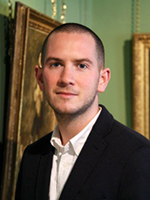
Peter Moore is an art historian specialising in paintings, prints and drawings from the 17th to 19th centuries. More broadly, his role at English Heritage focuses on country houses, their collections and display histories, working primarily at Audley End House and Wrest Park. He leads the British Art in Historic Houses sub-group of Tate’s British Art Network, and is the recipient of a European Paintings Collections Research Grant from the National Gallery.
Selected publications:
- Moore, P, ‘Mercantile culture and national identity’, in Peter Darnell Muilman, Charles Crokatt and William Keable in a Landscape, c.1750, by Thomas Gainsborough, Tate ‘In Focus’ (2017) (accessed 23 Dec 2019)
- Moore, P, ‘Dialogues in paint and print: mezzotint portraiture and intermedial exchange’, in Court, Country, City: British Art and Architecture, 1660–1735, ed M Hallett, N Llewellyn and M Myrone (London, 2016)
- Flynn, H, and Moore, P, ‘John Collett’s “Temple Bar” and the discovery of a preparatory study’, The Burlington Magazine, 157:1348 (2015), 460–64.
Cait Scott
PhD studentCait is an AHRC-funded Collaborative Doctoral Partnership student researching ‘Audley End House: the material culture of a post-medieval country house’ with English Heritage and the University of Sheffield. She is exploring what archaeological archives from excavations at the house can tell us about its occupants and those who worked for them. This project is co-supervised by Dr Wendy Monkhouse (English Heritage) and Dr Hugh Willmott (Sheffield). More broadly, her research interests are in the architecture and material culture of medieval and post-medieval England.
Dr Matt Thompson
Head Collections CuratorMatt trained as an archaeologist and worked in commercial archaeology before moving into the museum sector many years ago. He has worked with diverse collections from a wide range of periods from prehistory to the industrial revolution. He is currently on the editorial board of the journal Historic Environment, Policy & Practice. His research interests include, but are certainly not limited to, archaeology and public understandings of the past, heritage and identity and specific elements of transport history.
Selected publications:
- Thompson, M, The Picturesque Railway: The Lithographs of John Cooke Bourne (Cheltenham, 2015)
- Thompson, M, ‘Modernity, anxiety and the development of a popular railway landscape aesthetic, 1809–1879’, in Trains, Literature, and Culture: Reading and Writing the Rails, ed Steven D Spalding and Benjamin Fraser (Lanham, MD, 2011).
Dickon Whitewood
Curator of Collections and Interiors (East)Dickon specialises in medieval material culture and history with specific research interests in castle studies and military history. His work at English Heritage focuses on a wide array of collections from properties across the East region, ranging from the Neolithic to the 20th century. He is currently completing a PhD at the University of East Anglia on the castles of the Duchy of Lancaster.
Selected publications:
- Whitewood, D, Shrewsbury 1403: Struggle for a Fragile Crown (Oxford, 2017).
-
Collections Conservation
Dr Paul Lankester
Conservation ScientistPaul specialises in preventive conservation research, with interests in the effect of the environment on historic collections, with a recent focus on pollution, insect pests and the impact of climate change.
Selected publications:
- Lankester, P, Lauder, D, Pinniger, D, and Xavier-Rowe, A, ‘Operation Clothes Moth: where preventive conservation and public engagement meet’, Studies in Conservation, 63 (2018), 445–50
- Lankester, P, and Thickett, D, ‘Delivering damage functions in enclosures’, Climate for Collections: Standards and Uncertainties, ed J Ashley-Smith, A Burmester and M Eibl (London, 2013), 337–48
- Lankester, P, ‘The impact of climate change on historic interiors’, PhD thesis, University of East Anglia (2013).
Dr Naomi Luxford
Conservation ScientistNaomi’s primary research interests are in preventive conservation and conservation science, focusing on the deterioration of materials within historic collections. Her previous research has studied textiles, furniture and lacquer coatings on silver, as well as mesh blinds, wallpaper and UVC treatment for stonework, using a wide array of analytical techniques. Other areas of research interest are environmental control and monitoring, including display cases, heating systems and light control, with an emphasis on how display requirements and indoor environmental conditions relate to building performance, particularly in historic buildings.
Selected publications:
- Padfield, J, and Luxford, N, ‘Assessing how filtering or changing lights affects the relative colours seen in works of art: utilising TM-30-15 calculations’, in ICOM-CC 18th Triennial Conference Preprints, Copenhagen, ed J Bridgland (Paris, 2017), article 1514
- Downes, S, Luxford, N, and Stanley, B, ‘Mould attacks! A practical and effective method of treating mould contaminated stonework’, in Science and Art: A Future for Stone: Proceedings of the 13th International Congress on the Deterioration and Conservation of Stone, vol 2, ed JJ Hughes and T Howind (Paisley, 2016), 963–70 (accessed 23 Dec 2019)
- Luxford, N, Strlič, M, and Thickett, D, ‘Safe display parameters for veneer and marquetry objects: a review of the available information for wooden collections’, Studies in Conservation, 58:1 (2013), 1–12.
William Smith
PhD StudentWilliam Smith is an AHRC-funded Collaborative Doctoral Partnership student working on a PhD examining ‘Conservation of late 19th and 20th century artillery pieces’ in collaboration with English Heritage and Cardiff University. William is researching the corrosion forming due to the aggressive coastal environments in which many artillery pieces are displayed, and experimenting with coatings to determine which can best preserve the pieces. The results of his experiment will be used to produce recommended guidelines for the conservation of modern artillery.
Selected publications:
- Smith, W, Optimising the operational parameters for the laser cleaning of archaeological copper (2019). Submitted as part of an MSc at Cardiff University.
Bethan Stanley PACR
Senior Collections ConservatorBethan has a wide-ranging interest in preventive conservation, with particular emphasis on the practicalities of display and storage within a historic setting. Her research has investigated conservation parameters for redisplaying collections in a variety of situations, including in situ at a historic silversmith factory and within retrofitted historic display cases, and guidelines for repacking and moving stored collections. More recently she has been concentrating on the practicalities of undertaking treatment of mould-contaminated stonework and investigating effective treatments for the maintenance and conservation of the extensive artillery collection displayed at coastal locations across the country.
Selected publications:
- Thickett, D, and Stanley, B, ‘Management of sodium sulfate damage to polychrome stone and buildings’, 4th International Conference on Salt Weathering of Buildings and Stone Sculptures (2018) (accessed 4 Feb 2020)
- Thickett, D, and Stanley, B, ‘The use and mis-use of Renaissance wax’, in Metal 2019: Proceedings of the Interim Meeting of the ICOM-CC Metal Working Group, ICOM-CC and HE-Arc CR (Neuchatel, 2019), 232–40
- Downes, S, Luxford, N, and Stanley, B, ‘Mould attacks! A practical and effective method of treating mould contaminated stonework’, in Science and Art: A Future for Stone: Proceedings of the 13th International Congress on the Deterioration and Conservation of Stone, vol 2, ed JJ Hughes and T Howind (Paisley, 2016), 963–70 (accessed 23 Dec 2019).
Dr David Thickett FIIC
Senior Conservation ScientistDavid Thickett specialises in the study of environmental preventive conservation and object response. He has a particular interest in pollution and his recent research has focused on epidemiology, sustainability, damage functions, acoustic emission, non-invasive testing and showcases. David co-supervises three PhDs covering the topics of relining canvas paintings, and suitable environmental conditions for archaeological bone and for archaeological glass.
David is a directory board member of the Infra-red and Raman Users Group; UK expert to CEN TC346, European conservation standards and editorial board member of Heritage Science.
Selected publications:
- Thickett, D, ‘Frontiers of preventive conservation’, Studies in Conservation, 63 (2018), sup 1, 262–7 (subscription required; accessed 4 Feb 2020)
- Thickett, D, and Stanley, B, ‘The use and mis-use of Renaissance wax’, in Metal 2019: Proceedings of the Interim Meeting of the ICOM-CC Metal Working Group, ICOM-CC and HE-Arc CR (Neuchatel, 2019), 232–40
- Thickett, D, and Stanley, B, ‘Management of sodium sulfate damage to polychrome stone and buildings’, 4th International Conference on Salt Weathering of Buildings and Stone Sculptures (2018) (accessed 4 Feb 2020).

